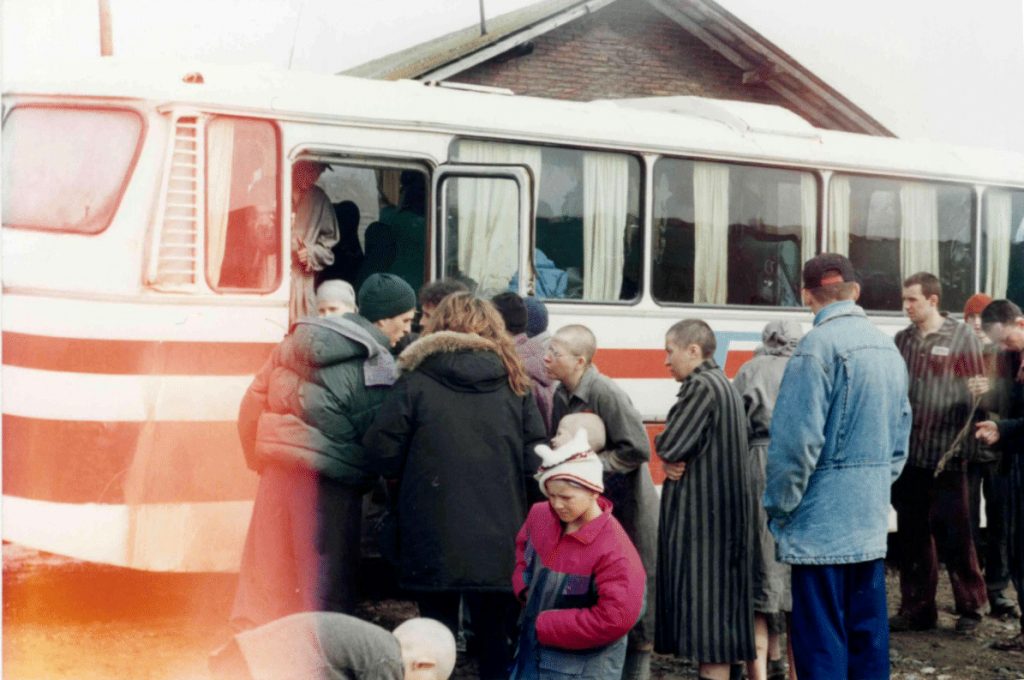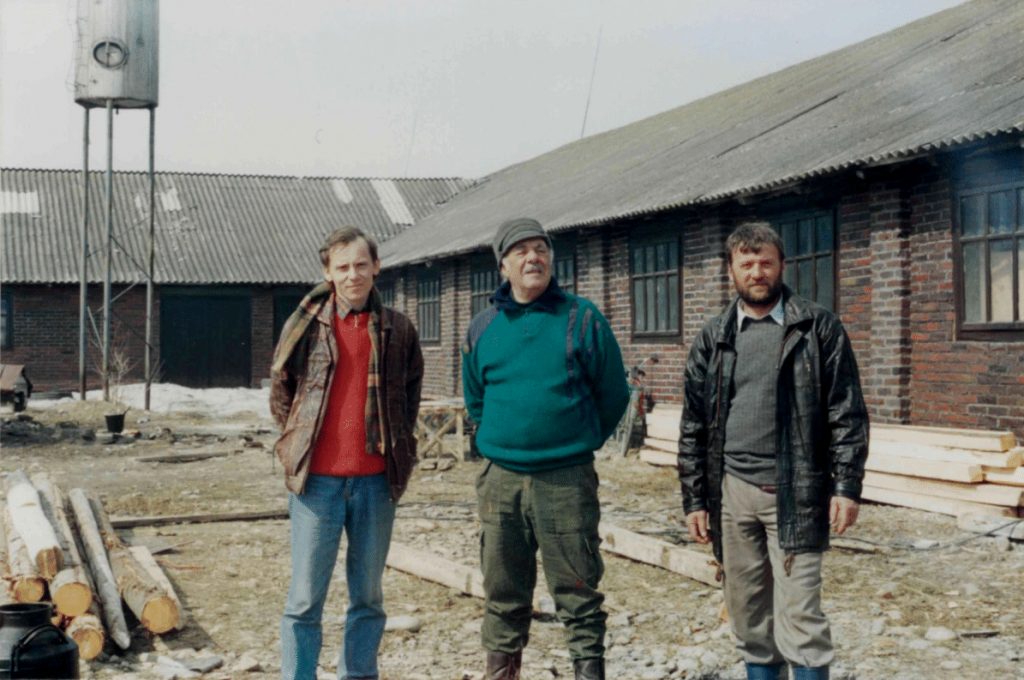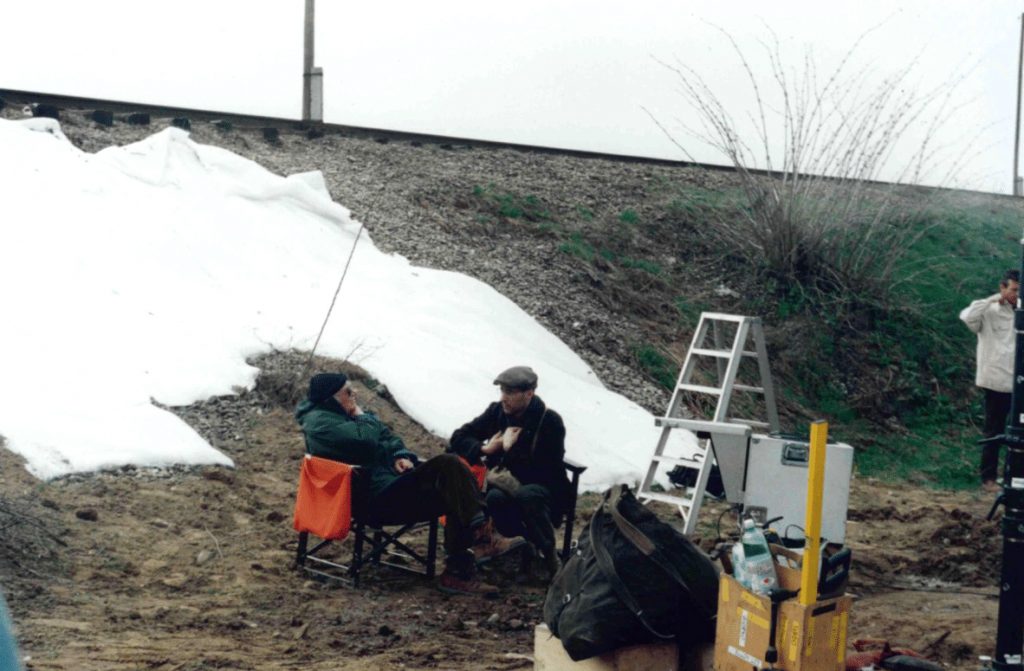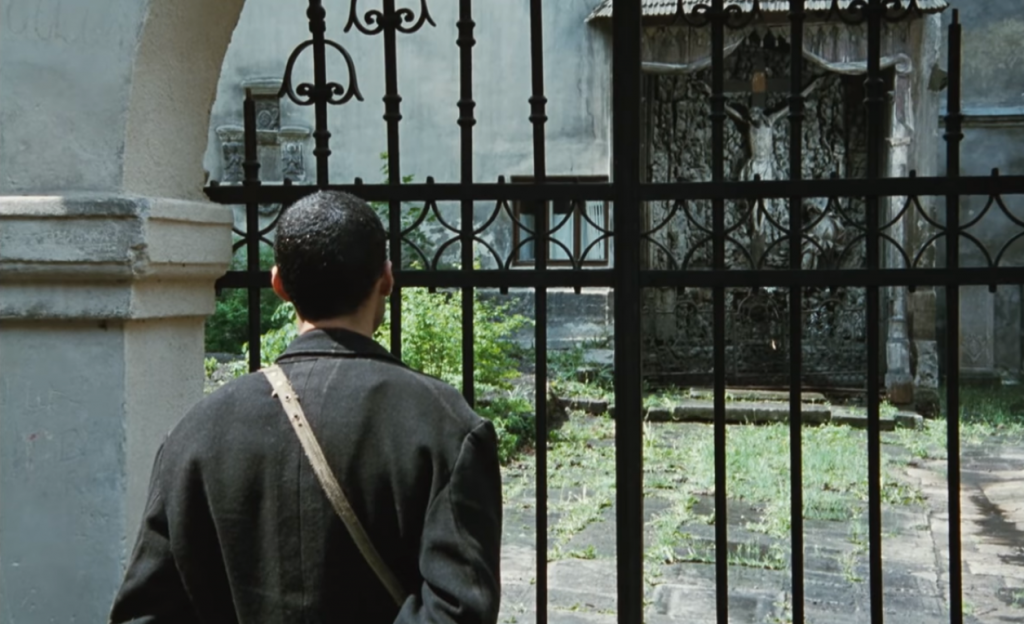Ihor Mykhailiuk: We knew little about the Holocaust in the 1990s
Auschwitz was recreated in the Ivano-Frankivsk region in 1996 for shooting the Italian film Truce (La Tregua). Ihor Mykhailiuk, who worked as an interpreter on the set, talks about the film.
Released in 1997, Truce is Francesco Rosi's last film. It was nominated for the Palme d'Or at the Cannes Film Festival for Best Picture and won the David di Donatello awards for Best Film, Best Director, and Best Producer. The film tells the story of an Italian of Jewish descent who was a prisoner in Auschwitz and, after the concentration camp was liberated, went on a long journey home to Turin. The film is based on the Italian writer Primo Levi's memoir, The Truce. The main mass scenes were filmed in the Ivano-Frankivsk region.
How The Truce was filmed
Yelyzaveta Tsarehradska: Why was the Ivano-Frankivsk region chosen for shooting a film by an Italian director produced in Italy, France, Germany, and Switzerland?
Ihor Mykhailiuk: The first idea was to do it in Poland, but at that time, it was much cheaper to shoot in Ukraine. That was the main reason, as far as I know. How did I get onto the set? I saw an ad in a newspaper that interpreters were being recruited to film a movie in Ivano-Frankivsk. I had a good laugh at it. But when I saw the same ad a week later, I decided to give it a try. I came, we talked, and I was invited to get involved.
It was late autumn. The filming took place in Horokholyna, Bohorodchany raion. My first impression was of an unfinished, dilapidated farm standing in what seemed like an open field. We had a kind of office there. Everyone gathered on the farm to receive instructions from the managers. Later, when they started building a replica of Auschwitz, the weather was cold and wet. We had nowhere to sit down or get warm, but it was fascinating.
Yelyzaveta Tsarehradska: Were there any special requirements for the actors?
Ihor Mykhailiuk: The thing with crowd scenes was that people had to be thin, preferably with their hair cut short. Any candidates who showed up but were not thin were rejected. We selected people of this type to complete the picture. Of course, there were nuances. But I wouldn't say there was a very strict approach to appearances. The main requirement was a lean constitution.

Yelyzaveta Tsarehradska: What did your work consist of?
Ihor Mykhailiuk: In general, there were many interpreters on the set. I had my share of the work. Each interpreter was attached to a representative of the Italian film company. They had to help contact the local staff and resolve any operational issues. I worked with set designers and architects, mostly with one person, but I crossed paths with dozens of others. Basically, I helped secure coordination between Ukrainian and Italian employees to do specific jobs.

Yelyzaveta Tsarehradska: How do artists work with the topic of the Holocaust? What was the level of preparation of the team?
Ihor Mykhailiuk: When I arrived on the set, I had no idea what kind of people I was working with. There was no internet, no literature. I knew nothing. But there was one man there, whom we called Zhora, and who had worked at the Dovzhenko Film Studio all his life. Little by little, Zhora opened my eyes by explaining who, what, how, and what they were doing. He was my only source of knowledge about what happened before the shooting took place. He was the one who told me about a Jew who survived Auschwitz, returned home, and wrote the book that the film was based on. According to Zhora, this man allegedly financed the film — on his own or, maybe, with his community. Filmmakers and Jewish community organizations from Switzerland, France, Italy, and Germany were involved.
Ivano-Frankivsk, a Jewish city?
Yelyzaveta Tsarehradska: What did Ivano-Frankivsk residents know about the Holocaust then?
Ihor Mykhailiuk: Ivano-Frankivsk was closed to foreigners. If a foreigner found a way into our city, he must have received multiple permits from the former KGB. We didn't know that much about the Holocaust. I did, however, have some knowledge of the Jewish community in Ivano-Frankivsk. I knew that there used to be a Jewish cemetery behind the city lake. It was the oldest Jewish cemetery. I cannot say whether it was flooded.
I knew a little that Ivano-Frankivsk was a Jewish city and that there was a ghetto there. Jews and the Holocaust were not popular topics in those days. We had just come out of the communist darkness. Society was taking its first steps toward opening its eyes and reassessing the past and current events. The topic of the Holocaust was not relevant at the time. And it wasn't the fault of society. It was the fault of the government that we had to live with.
Now, our society is more or less open. Now, you can publicly express your views and protest, which was impossible back then. For example, a German church stood on the site of the Nadiia hotel. It was simply blown up, and no one said a word. There are many such examples in Ivano-Frankivsk.
Highlights from the film set
Yelyzaveta Tsarehradska: Were there any moments or people that impressed you the most?
Ihor Mykhailiuk: After living in a closed society, communication with foreigners came as a shock to us. There were many interesting moments. For example, there was a Swiss representative who spoke several languages. I spoke with her in Italian, and she also had an English interpreter. She also spoke French and German. In the span of three minutes, she could take turns talking to people in four different languages. Fluently. It was a shock for me.
For one of the set designers, that film was No. 169 on his list. He is a legend of Italian cinema. He practically grew up in the "Italian Hollywood" in the center of Rome. Once, he told us about his films and the actors he worked with. I was very impressed.
Andrea Crisanti, the chief production designer, is an iconic figure in Italian cinema who made films with Adriano Celentano. For me, it was an incredible, new, exciting world that I had never seen before that left many impressions, a lot of information, and memories for life.

Ihor Mykhailiuk's family archive. Photo taken from Postimpreza.
This program is created with the support of Ukrainian Jewish Encounter (UJE), a Canadian charitable non-profit organization.
Originally appeared in Ukrainian (Hromadske Radio podcast) here.
This transcript has been edited for length and clarity.
Translated from the Ukrainian by Vasyl Starko.




















